'We don't have much time to waste': How will climate change affect Sweden?
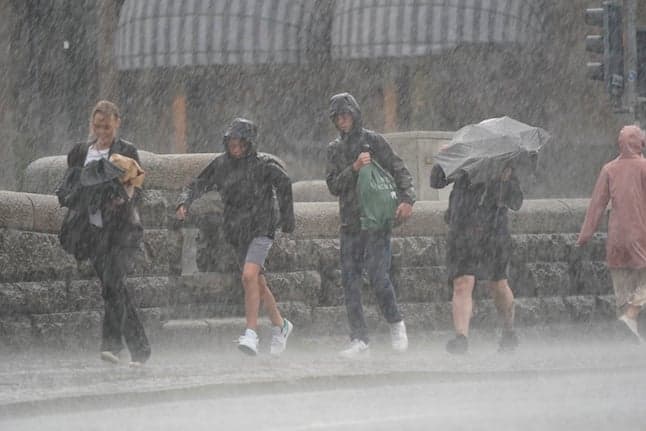
"The climate crisis is not something that belongs to the future – we’re living it now," one of the authors of the recent IPCC report tells The Local's contributor Anne Grietje Franssen. How has Sweden been affected, and what will happen next?
The summer – at least on Sweden’s west coast – had been as good as it could be.
There was no need to travel southwards: in June and July combined, the number of grey and rainy days could be counted on one hand. Most summer days had been clear-skied and sunny, often warm enough to swim in the sea and have dinner in the garden, but rarely so hot as to be paralysing. Days turned into weeks turned into months of outside breakfasts, followed by a swim, sea-side reading, midday ice-cream, and meals in the late-evening sun.
But, watching the news, one could only wonder how many of those delightful Swedish summers we have left.
"Extreme weather events" around the world, and close to home, made up much of the news cycle over the past few months. Floods killed hundreds in Germany and Belgium, and immense swathes of land burned in popular holiday destinations like Turkey, Greece and Italy.
As August came around, the world was confronted with yet another alarming report on causes of the past and future changes in climate. The Sixth Assessment Report of the United Nations Intergovernmental Panel on Climate Change (IPCC) is, as its name suggests, the sixth in a series of key reports which assess scientific, technical, and socio-economic information concerning climate change.
A total of 234 scientists from 66 countries contributed to the first of three working group reports, focusing on The Physical Science Basis of Climate Change and drawing from more than 14,000 scientific papers to produce a 3,949-page report. The report has been approved by all UN countries and collects the current state of knowledge about climate change.
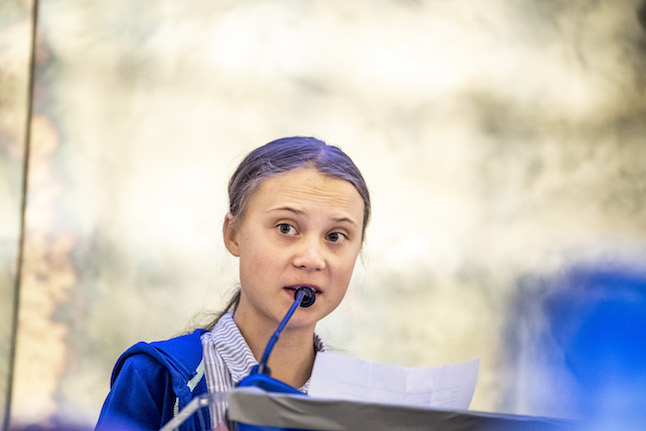
Swedish climate campaigner Greta Thunberg commenting on a climate report in 2019. Photo: Pontus Lundahl/TT
Deliang Chen, a climatologist at the University of Gothenburg and one of the report’s 31 coordinating lead authors, helped to break down those nearly 4,000 pages into a few key takeaways. First of all, how does this report differ from the previous ones? Haven’t we heard its gloomy messages a thousand times before?
This report, Chen told The Local, is the most comprehensive and systematic, taking into account the accumulated understanding of thousands of researchers and decades of academic work. It’s also the "most critical", he said: “The climate crisis is not something that belongs to the future – we’re living it now. It won't take long before we reach the 1.5C degree threshold.”
Chen discerns four main findings in the report. Firstly, humanity has increased and is increasing global temperatures. “The first IPCC report stated that temperature rises could be caused by human impact, but that had yet to be proven beyond doubt. This time it’s presented as an established fact: global warming has been caused by human activities. Those are very strong terms for a report like the one by IPCC,” he said.
The second finding is that to achieve this 1.5C maximum, or even 2.0C – as decided on in Paris in 2015 – will become a daunting task. “The world has already warmed by 1.1 degrees since the pre-industrial era, so we have only 0.4 degrees left,” Chen remarked. According to the report, we’ll reach this 1.5 degrees mark within the next 20 years. “There is a sense of urgency: we don’t have much time to waste.”
The third finding is that climate change is already happening, and it’s happening everywhere. “Some regions are affected more strongly than others, but global warming has reached all of us in one form or another.”
And finally, the report’s fourth message is that extreme events like floodings, droughts or forest fires, can all be linked to human involvement. “Before we weren’t able to attribute these to human activities, but this time we are certain: all these events can be linked to human-induced climate change.”
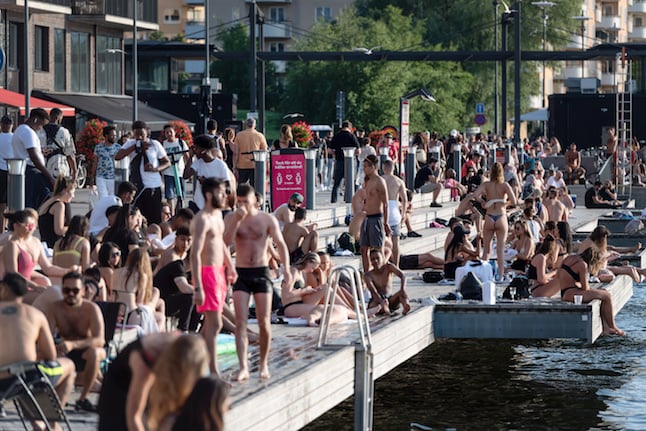
A heatwave in 2020. Photo: Stina Stjernkvist/TT
The IPCC has assessed how climate change is affecting and will affect different regions. “In Northern Europe we will see the temperature continue to rise, as everywhere. Sweden will see an overall increase in precipitation. The flooding risk will get bigger. During summers there will additionally be a drought risk in the south-eastern regions of Sweden. And there will probably be some changes in wind speed. Overall, we’re likely to see a slightly decreased wind speed, but during the fall winds, caused by storms in certain regions, might become stronger.”
So what might that look like? What will be the impact on for example agriculture, vegetation and pests? Those questions Chen cannot answer. “There are three working groups, and mine only concentrates on the physical science basis of climate change. A report from the second working group, due next year, zeroes in on the impact of global warming on different sectors.”
There are, however, several institutions and scientists in Sweden trying to answer the question of what our future might look like.
With a 2C warmer climate globally, according to the Swedish national weather agency SMHI's climate scenarios, Swedish summers will be 1-2C warmer compared to 1971–2000. In winter this change will be greater, ranging from approximately 2C to 5C. Temperatures in Sweden, SMHI predicts, will rise more than the world average. This is due to the country’s proximity to the Arctic.
SMHI’s Gustav Strandberg explained in an interview with WWF Sweden: “In the Arctic, when the ice and glaciers melt and the bright, reflective ice sheets disappear, much more sunlight can be absorbed, which means that the warming in that area speeds up. If the global average temperature increases by one degree, the difference is greatest in the Arctic, and it will then spill down to us.”
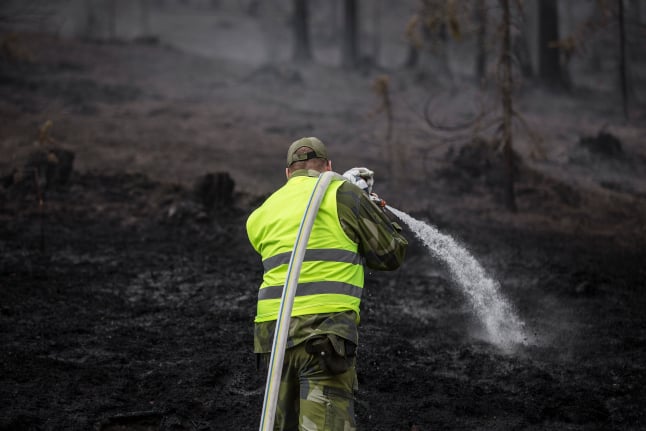
Unprecedented forest fires hit Sweden in 2018. Photo: Adam Wrafter/SvD/TT
SMHI has produced different climate scenarios until the end of the century, depending on to what extent the world chooses to and succeeds in curbing emissions. Following the worst-case scenario, the average temperature increases by up to nine degrees, which would have major consequences for the natural environment, the institute states.
Precipitation, as Chen also mentioned, is expected to increase substantially – even in the more optimistic scenarios. It will increase in all seasons, but the change will probably be greatest in winter, and up north.
“If you look at summer and autumn in Götaland,” Strandberg told WWF about southern Sweden, “there will be areas where the difference is close to zero. The effect of this can be that the soil will continue to get drier as evaporation increases with warmer temperatures.” The groundwater level may decrease, which might lead to saltwater from the Baltic Sea coming in and destroying freshwater reserves.
Both the size and number of forest fires are expected to increase, too, particularly in this same (dry) area bordering on the Baltic Sea. The frequency of high-risk periods will increase throughout the country, as will the length of these periods. The most extreme fire risk conditions are expected to be found on the islands of Öland and Gotland.
Moreover, the sea level is expected to rise about one metre by the turn of the century in 2100. Combined with stormy weather the water may rise up to three metres, with high waves crashing in over the coasts of Skåne, Halland, Blekinge and southern Småland with great force.
Especially in southern Sweden, where there’s little to no land uplift, people living within about 500 metres from the sea will feel the full effect of the sea level rise. Cities like Malmö, Kristianstad and Gothenburg, which are close to the water in both distance and height, will likely be hit hard by floods and other extreme (weather) events. Land directly along the coast might become inhabitable. In Skåne, for example, the popular seaside resort of Skanör-Falsterbo – an area already subject to severe flooding – is forecast to partly disappear underwater.
Extensive coastal erosion is already taking place along parts of Skåne’s south coast, where the coastline has moved more than 200 metres inland over the last 40 years, according to SMHI's website.
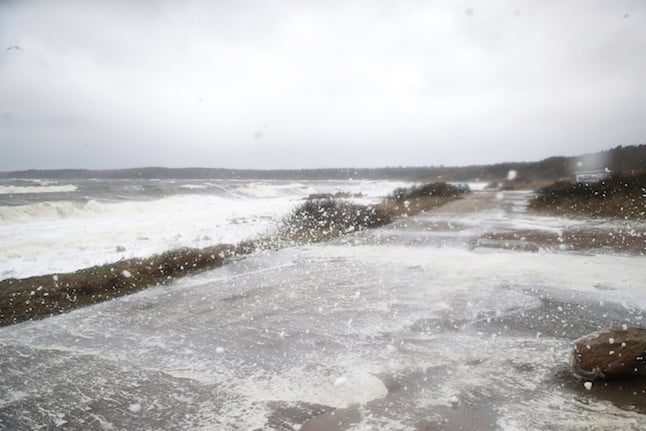
A storm in Halmstad in 2020. Photo: Adam Ihse/TT
Another obvious effect of climate change is that Sweden’s flora and fauna will undergo radical changes. The tree line will move upward, to the point that the typically Nordic mountainous fjäll landscape might (partly) disappear and be replaced by forests.
The Kungsleden hiking trail can in some decades from now be overgrown with birch trees and shrubs, botanist Wenche Eide at the Swedish University of Agricultural Sciences in Uppsala predicted in an interview (in Swedish) by Expressen. New species establish themselves in the north while others won’t be able to survive and will disappear.
Strong weather changes – i.e. from very cold to very warm – is one of the biggest threats to the environment, Eide continued. “Many species cannot cope with extreme changes. They are used to slow transition periods in both spring and autumn.” Animals and plants in the Swedish mountains and near the Baltic Sea are considered to be particularly sensitive to the effects of climate change.
SMHI’s Strandberg commented that a warmer climate might be positive in some respects: The average temperature only needs to increase one degree for southern Sweden to have the climate of central Germany. The vegetation period increases when the climate becomes milder, which may result in larger and more regular yields. Up north, in Norrland, there might be time for an extra round of sowing and harvesting. “Everything will grow better, even the forests,” Strandberg told WWF.
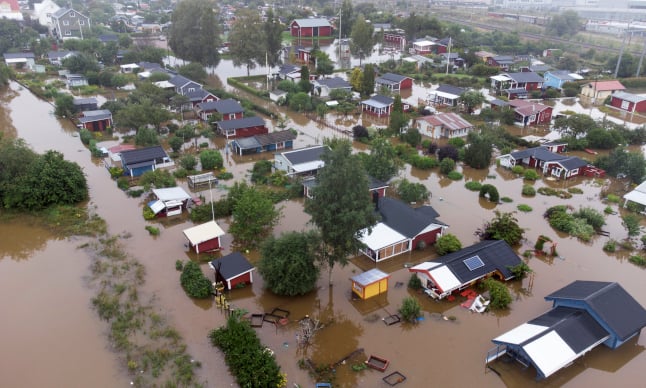
A residential area in Gävle covered in water after heavy rainfall in August 2021. Photo: Fredrik Sandberg/TT
The flip side is that a warmer climate also increases the risk of fungal and viral diseases, bacteria and pests that the cold has spared Sweden from thus far. Pests might have time for another laying of eggs, and new species can come from the south and upset the ecological balance, according to Strandberg. Invasive species that might survive in Sweden’s future climate could kill native animals and plants.
Public health is bound to be affected by the arrival of new diseases as well. In Sweden, previously unknown species of ticks and tick-borne diseases have already been detected and will likely become more ubiquitous.
A report by the European Academies Science Advisory Council (EASAC) dating back to 2019, warned of the grave consequences of climate change on the health of European (and world) citizens. Cardiovascular diseases, kidney diseases and mental health problems are already on the rise. Dengue fever, an at times fatal infectious disease spread by mosquitoes, is expected to establish itself in Europe within half a century.
The list of the effects of climate change could go on and on. Think of, for example, tourism which might decrease in winter with the disappearance of snow, and increase in other seasons once we have a climate that allows for long sun-bathing holidays.
Think of the housing shortage that might occur when thousands or hundreds of thousands of coastal dwellings will become uninhabitable. Think of Swedish vineyards that might replace their French counterparts, of Swedish fruit trees and Swedish olive oil. And think of the immense wave of immigration into Europe, and in effect into Sweden, when entire countries disappear underneath the surface of the ocean or become too hot, too dry and too barren to survive in.
Having said that, many experts seem to agree that a country like Sweden has all the economic, geographical and social prerequisites needed to plan for and prevent natural disasters, and to be able to handle the consequences.
Which certainly doesn’t mean it's in a position to sit back and relax.
Chen: “There’s a huge sense of urgency. Some of the physiological changes set off by human activities will continue, even if we were to stop all emissions today. The sea level rise, for example, is part of a system that has some inertia; it will continue for quite some time after we put an end to the causes of human-induced global warming. The timing of the report is critical: there’s another COP-meeting in Glasgow in November. Hopefully, world leaders won’t only discuss and negotiate, but also make some decisions.”
Comments
See Also
The summer – at least on Sweden’s west coast – had been as good as it could be.
There was no need to travel southwards: in June and July combined, the number of grey and rainy days could be counted on one hand. Most summer days had been clear-skied and sunny, often warm enough to swim in the sea and have dinner in the garden, but rarely so hot as to be paralysing. Days turned into weeks turned into months of outside breakfasts, followed by a swim, sea-side reading, midday ice-cream, and meals in the late-evening sun.
But, watching the news, one could only wonder how many of those delightful Swedish summers we have left.
"Extreme weather events" around the world, and close to home, made up much of the news cycle over the past few months. Floods killed hundreds in Germany and Belgium, and immense swathes of land burned in popular holiday destinations like Turkey, Greece and Italy.
As August came around, the world was confronted with yet another alarming report on causes of the past and future changes in climate. The Sixth Assessment Report of the United Nations Intergovernmental Panel on Climate Change (IPCC) is, as its name suggests, the sixth in a series of key reports which assess scientific, technical, and socio-economic information concerning climate change.
A total of 234 scientists from 66 countries contributed to the first of three working group reports, focusing on The Physical Science Basis of Climate Change and drawing from more than 14,000 scientific papers to produce a 3,949-page report. The report has been approved by all UN countries and collects the current state of knowledge about climate change.

Deliang Chen, a climatologist at the University of Gothenburg and one of the report’s 31 coordinating lead authors, helped to break down those nearly 4,000 pages into a few key takeaways. First of all, how does this report differ from the previous ones? Haven’t we heard its gloomy messages a thousand times before?
This report, Chen told The Local, is the most comprehensive and systematic, taking into account the accumulated understanding of thousands of researchers and decades of academic work. It’s also the "most critical", he said: “The climate crisis is not something that belongs to the future – we’re living it now. It won't take long before we reach the 1.5C degree threshold.”
Chen discerns four main findings in the report. Firstly, humanity has increased and is increasing global temperatures. “The first IPCC report stated that temperature rises could be caused by human impact, but that had yet to be proven beyond doubt. This time it’s presented as an established fact: global warming has been caused by human activities. Those are very strong terms for a report like the one by IPCC,” he said.
The second finding is that to achieve this 1.5C maximum, or even 2.0C – as decided on in Paris in 2015 – will become a daunting task. “The world has already warmed by 1.1 degrees since the pre-industrial era, so we have only 0.4 degrees left,” Chen remarked. According to the report, we’ll reach this 1.5 degrees mark within the next 20 years. “There is a sense of urgency: we don’t have much time to waste.”
The third finding is that climate change is already happening, and it’s happening everywhere. “Some regions are affected more strongly than others, but global warming has reached all of us in one form or another.”
And finally, the report’s fourth message is that extreme events like floodings, droughts or forest fires, can all be linked to human involvement. “Before we weren’t able to attribute these to human activities, but this time we are certain: all these events can be linked to human-induced climate change.”

The IPCC has assessed how climate change is affecting and will affect different regions. “In Northern Europe we will see the temperature continue to rise, as everywhere. Sweden will see an overall increase in precipitation. The flooding risk will get bigger. During summers there will additionally be a drought risk in the south-eastern regions of Sweden. And there will probably be some changes in wind speed. Overall, we’re likely to see a slightly decreased wind speed, but during the fall winds, caused by storms in certain regions, might become stronger.”
So what might that look like? What will be the impact on for example agriculture, vegetation and pests? Those questions Chen cannot answer. “There are three working groups, and mine only concentrates on the physical science basis of climate change. A report from the second working group, due next year, zeroes in on the impact of global warming on different sectors.”
There are, however, several institutions and scientists in Sweden trying to answer the question of what our future might look like.
With a 2C warmer climate globally, according to the Swedish national weather agency SMHI's climate scenarios, Swedish summers will be 1-2C warmer compared to 1971–2000. In winter this change will be greater, ranging from approximately 2C to 5C. Temperatures in Sweden, SMHI predicts, will rise more than the world average. This is due to the country’s proximity to the Arctic.
SMHI’s Gustav Strandberg explained in an interview with WWF Sweden: “In the Arctic, when the ice and glaciers melt and the bright, reflective ice sheets disappear, much more sunlight can be absorbed, which means that the warming in that area speeds up. If the global average temperature increases by one degree, the difference is greatest in the Arctic, and it will then spill down to us.”

SMHI has produced different climate scenarios until the end of the century, depending on to what extent the world chooses to and succeeds in curbing emissions. Following the worst-case scenario, the average temperature increases by up to nine degrees, which would have major consequences for the natural environment, the institute states.
Precipitation, as Chen also mentioned, is expected to increase substantially – even in the more optimistic scenarios. It will increase in all seasons, but the change will probably be greatest in winter, and up north.
“If you look at summer and autumn in Götaland,” Strandberg told WWF about southern Sweden, “there will be areas where the difference is close to zero. The effect of this can be that the soil will continue to get drier as evaporation increases with warmer temperatures.” The groundwater level may decrease, which might lead to saltwater from the Baltic Sea coming in and destroying freshwater reserves.
Both the size and number of forest fires are expected to increase, too, particularly in this same (dry) area bordering on the Baltic Sea. The frequency of high-risk periods will increase throughout the country, as will the length of these periods. The most extreme fire risk conditions are expected to be found on the islands of Öland and Gotland.
Moreover, the sea level is expected to rise about one metre by the turn of the century in 2100. Combined with stormy weather the water may rise up to three metres, with high waves crashing in over the coasts of Skåne, Halland, Blekinge and southern Småland with great force.
Especially in southern Sweden, where there’s little to no land uplift, people living within about 500 metres from the sea will feel the full effect of the sea level rise. Cities like Malmö, Kristianstad and Gothenburg, which are close to the water in both distance and height, will likely be hit hard by floods and other extreme (weather) events. Land directly along the coast might become inhabitable. In Skåne, for example, the popular seaside resort of Skanör-Falsterbo – an area already subject to severe flooding – is forecast to partly disappear underwater.
Extensive coastal erosion is already taking place along parts of Skåne’s south coast, where the coastline has moved more than 200 metres inland over the last 40 years, according to SMHI's website.

Another obvious effect of climate change is that Sweden’s flora and fauna will undergo radical changes. The tree line will move upward, to the point that the typically Nordic mountainous fjäll landscape might (partly) disappear and be replaced by forests.
The Kungsleden hiking trail can in some decades from now be overgrown with birch trees and shrubs, botanist Wenche Eide at the Swedish University of Agricultural Sciences in Uppsala predicted in an interview (in Swedish) by Expressen. New species establish themselves in the north while others won’t be able to survive and will disappear.
Strong weather changes – i.e. from very cold to very warm – is one of the biggest threats to the environment, Eide continued. “Many species cannot cope with extreme changes. They are used to slow transition periods in both spring and autumn.” Animals and plants in the Swedish mountains and near the Baltic Sea are considered to be particularly sensitive to the effects of climate change.
SMHI’s Strandberg commented that a warmer climate might be positive in some respects: The average temperature only needs to increase one degree for southern Sweden to have the climate of central Germany. The vegetation period increases when the climate becomes milder, which may result in larger and more regular yields. Up north, in Norrland, there might be time for an extra round of sowing and harvesting. “Everything will grow better, even the forests,” Strandberg told WWF.

The flip side is that a warmer climate also increases the risk of fungal and viral diseases, bacteria and pests that the cold has spared Sweden from thus far. Pests might have time for another laying of eggs, and new species can come from the south and upset the ecological balance, according to Strandberg. Invasive species that might survive in Sweden’s future climate could kill native animals and plants.
Public health is bound to be affected by the arrival of new diseases as well. In Sweden, previously unknown species of ticks and tick-borne diseases have already been detected and will likely become more ubiquitous.
A report by the European Academies Science Advisory Council (EASAC) dating back to 2019, warned of the grave consequences of climate change on the health of European (and world) citizens. Cardiovascular diseases, kidney diseases and mental health problems are already on the rise. Dengue fever, an at times fatal infectious disease spread by mosquitoes, is expected to establish itself in Europe within half a century.
The list of the effects of climate change could go on and on. Think of, for example, tourism which might decrease in winter with the disappearance of snow, and increase in other seasons once we have a climate that allows for long sun-bathing holidays.
Think of the housing shortage that might occur when thousands or hundreds of thousands of coastal dwellings will become uninhabitable. Think of Swedish vineyards that might replace their French counterparts, of Swedish fruit trees and Swedish olive oil. And think of the immense wave of immigration into Europe, and in effect into Sweden, when entire countries disappear underneath the surface of the ocean or become too hot, too dry and too barren to survive in.
Having said that, many experts seem to agree that a country like Sweden has all the economic, geographical and social prerequisites needed to plan for and prevent natural disasters, and to be able to handle the consequences.
Which certainly doesn’t mean it's in a position to sit back and relax.
Chen: “There’s a huge sense of urgency. Some of the physiological changes set off by human activities will continue, even if we were to stop all emissions today. The sea level rise, for example, is part of a system that has some inertia; it will continue for quite some time after we put an end to the causes of human-induced global warming. The timing of the report is critical: there’s another COP-meeting in Glasgow in November. Hopefully, world leaders won’t only discuss and negotiate, but also make some decisions.”
Join the conversation in our comments section below. Share your own views and experience and if you have a question or suggestion for our journalists then email us at [email protected].
Please keep comments civil, constructive and on topic – and make sure to read our terms of use before getting involved.
Please log in here to leave a comment.